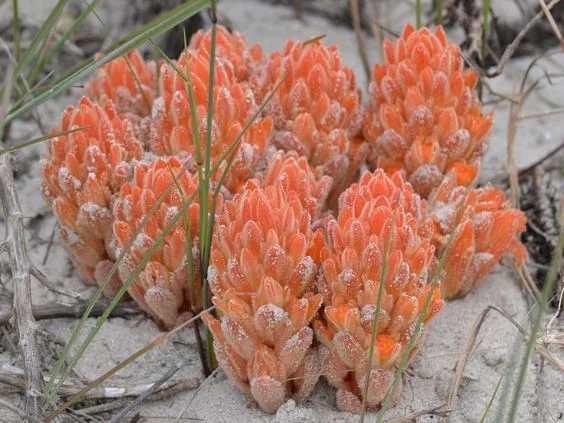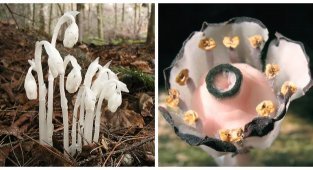Vampires of the botanical world: 20 fungal parasites that drink their “blood” (20 photos)
They are called chlorophyll-free vampires - no leaves, no special roots, the main thing is the host, which you can drink. More precisely, make a symbiotic pair for it, bloom, give seeds, and continue its lineage. And what is the benefit for mushrooms - no one has understood until now. 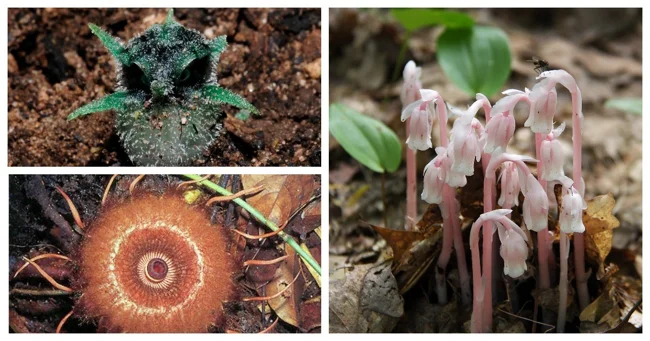
There are various adaptations of parasitic plants that allow them to exploit their hosts. Stem and root parasites attach to the stems and roots of host plants, respectively. Hemiparasites are parasitic plants that photosynthesize to some extent, obtaining primarily water and mineral nutrients from the host plant. The holoparasite obtains all of its fixed carbon from the host plant and cannot photosynthesize itself.
Balanophora harlandii Hook 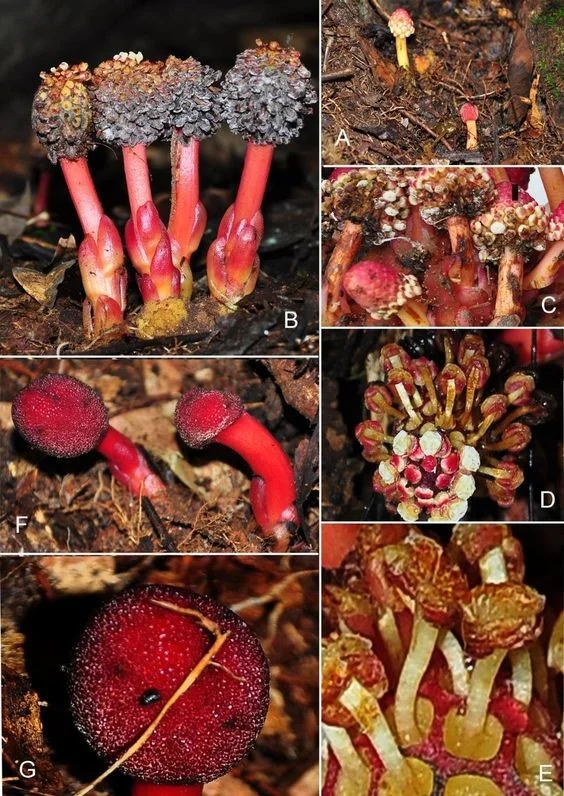
Plants in symbiosis with fungi are called mycoheterotrophs. Mycoheterotrophs are found among various systematic groups. More than 400 species of plants from 87 genera are known that feed by parasitizing the fungus
Cistanche tubulosa (Cistanch phelypaea, Desert Hyacinth, Dhanon, Dhanoon, Lathraea phelypaea) 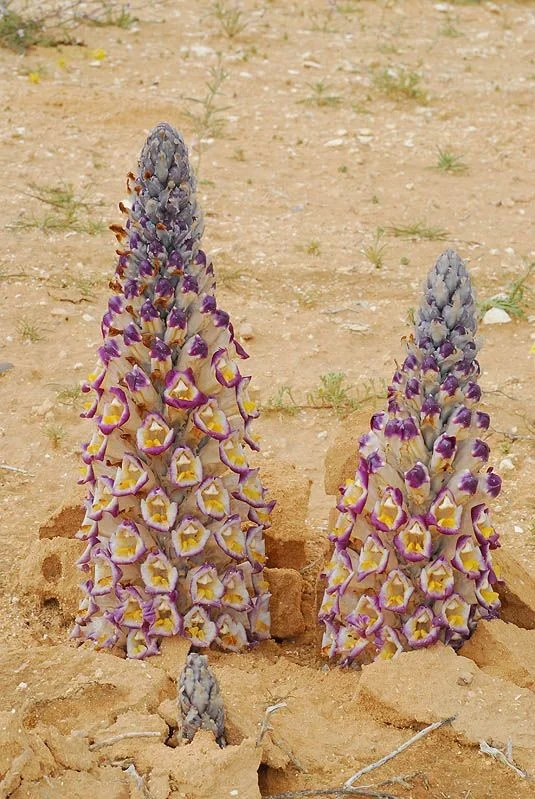
One-flowered rosewort 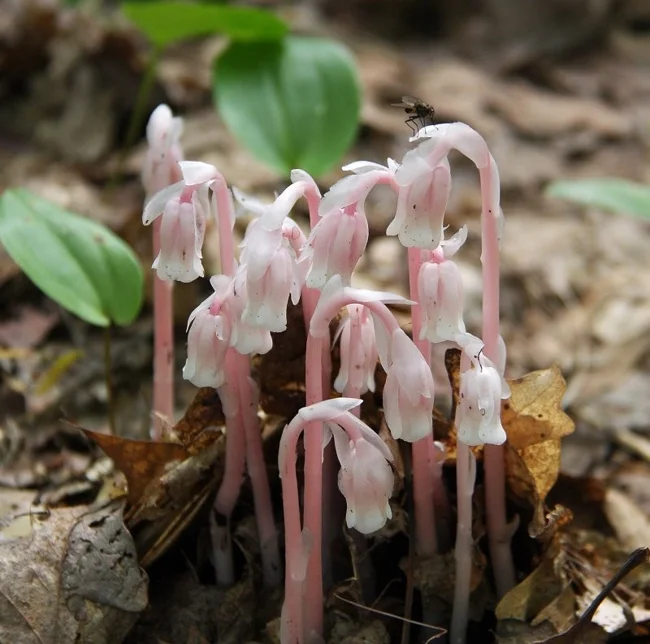
Bdallophytum oxylepis 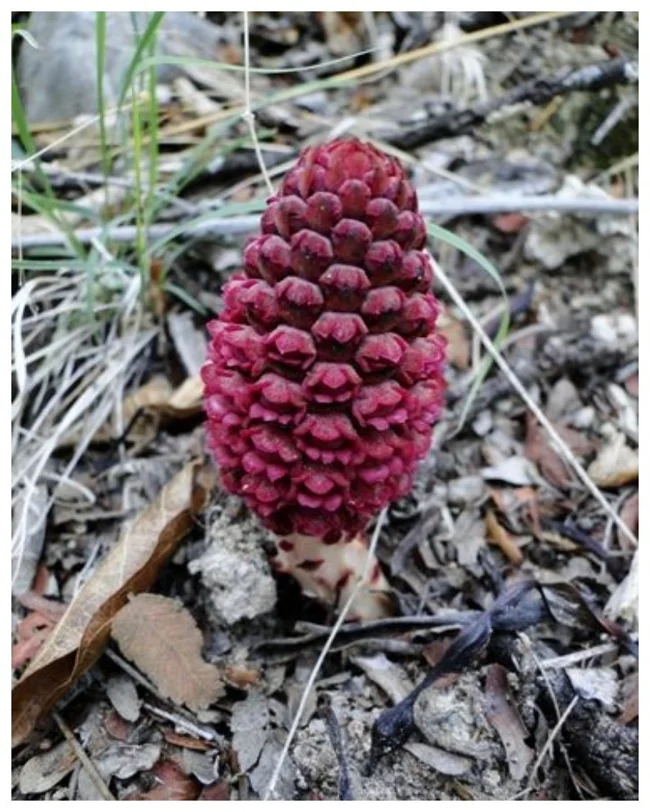
These plants spend most of their life cycle underground, becoming visible only during flowering, which coincides with the rainy season in September-October. Their cells do not have chlorophyll, which is necessary for the photosynthesis of organic compounds, so they obtain nutrients from fungi (which ones are unknown), which previously received them from other plants
Cynomorium coccineum 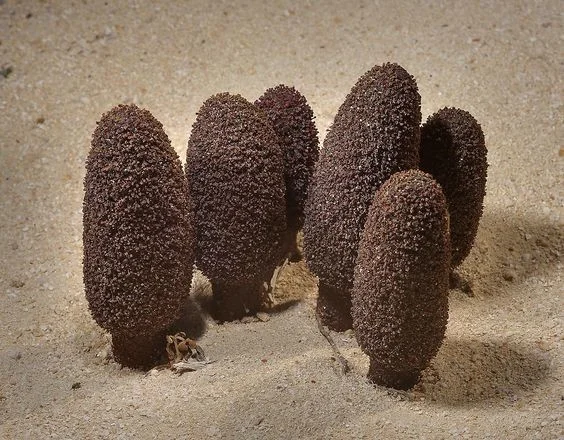
Нydnora esculenta 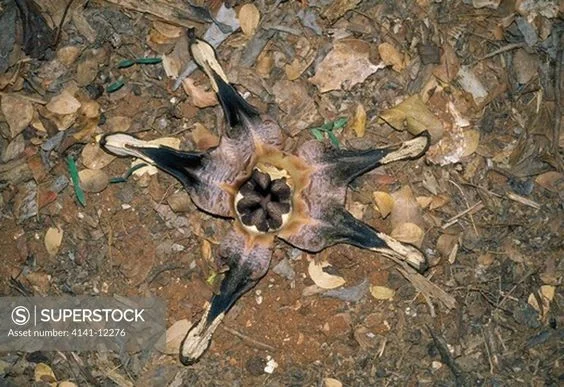
Aeginetia selebica 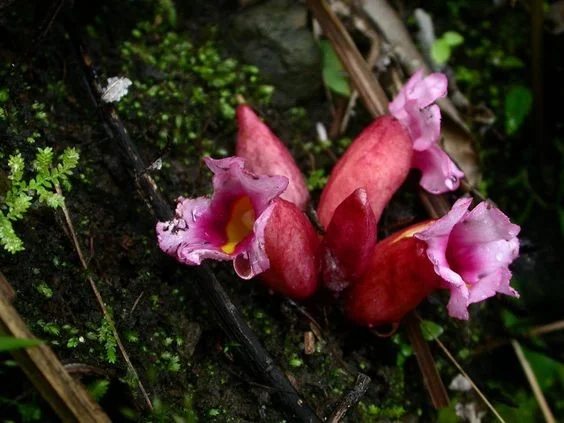
Cytinus ruber 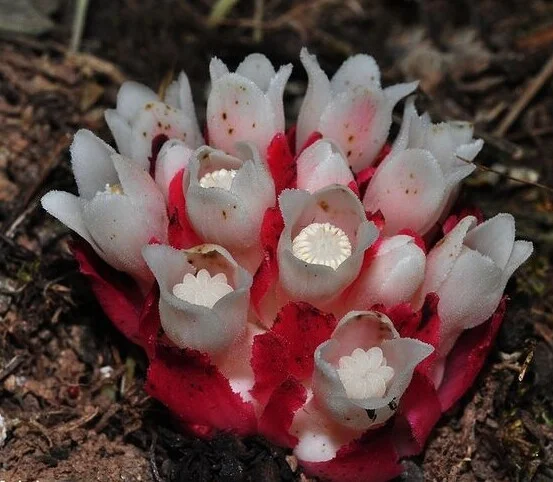
Cytinus hypocistis 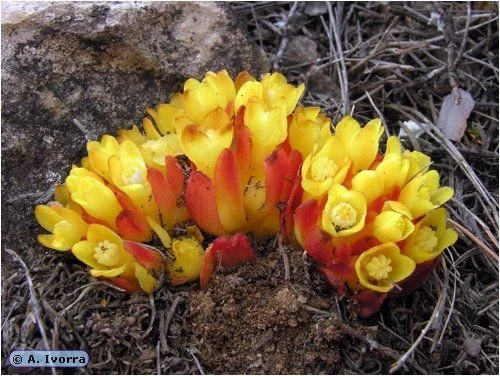
Apodanthes caseariae 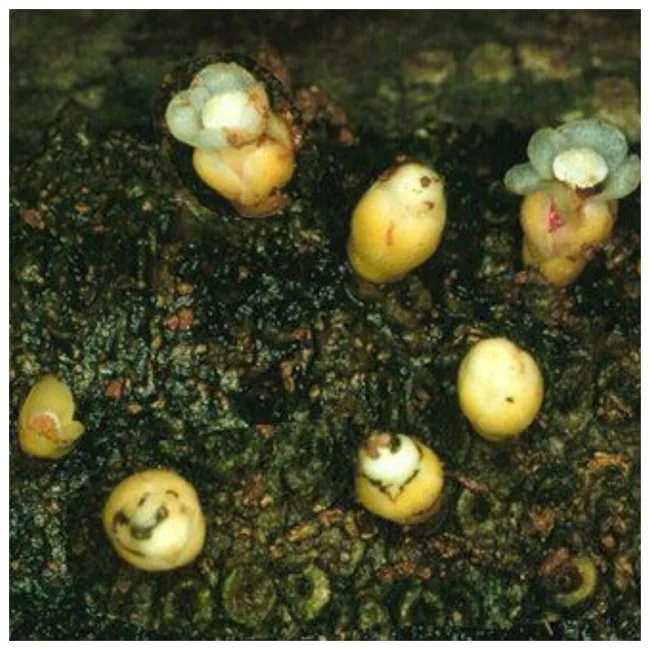
Thismia kelabitiana 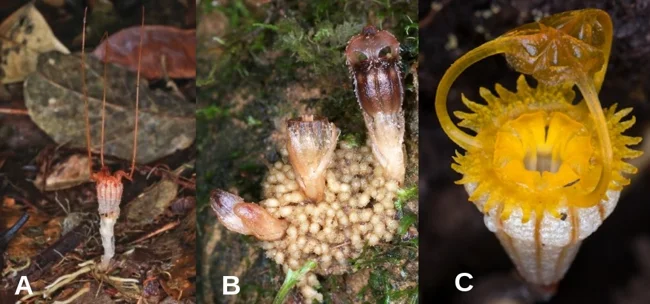
Thismias, or fairy lanterns, are the most common representatives of mycoheterotrophs.
Thismiaceae 
Rhizanthes infanticida 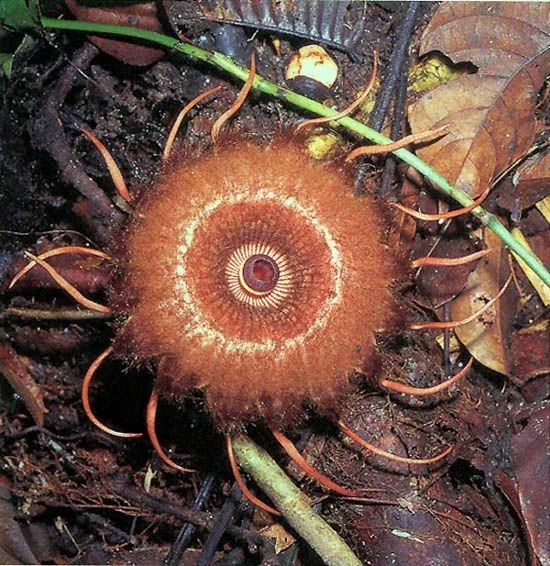
In total, mycoheterotrophs include about four hundred species from different families of flowering plants, for example, some species of orchids and plants of the subfamily of the heather family (Ericaceae), as well as liver mosses of the genus Cryptothallus.
Rafflesia kerrii 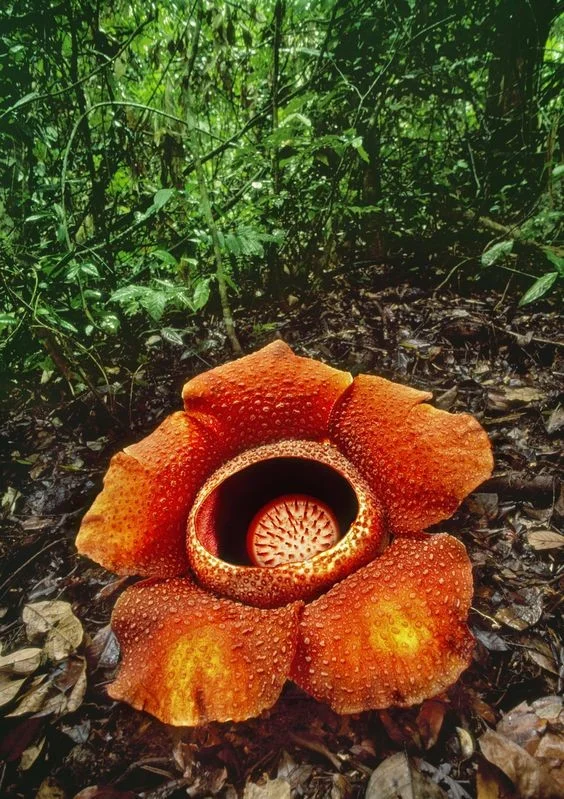
In chlorophyll-free plants, vegetative organs are reduced to varying degrees. The underground part is represented by shortened roots or rhizomes, sometimes tubers. It is in the root system that fungal hyphae are usually embedded to transfer organic compounds, primarily carbohydrates. Leaves are absent or reduced to widely spaced achlorophyll scales along the axis of the inflorescence.
Cytinus sanguineus 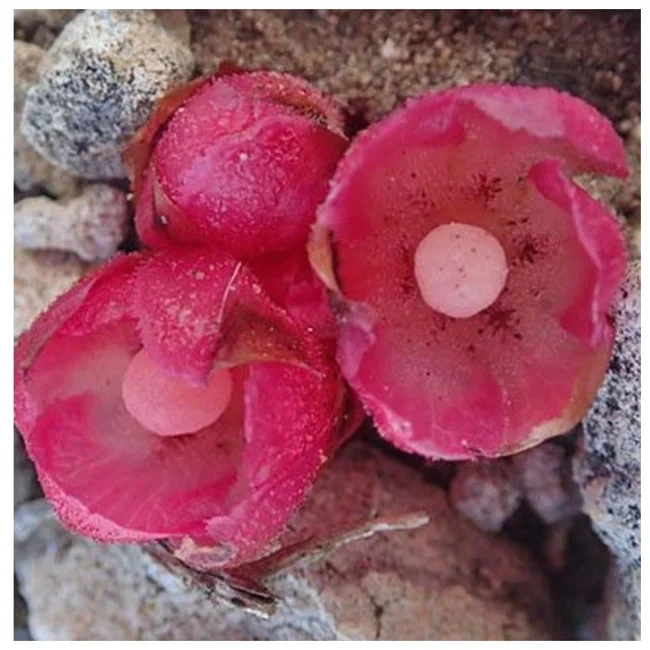
Thismia thaithongiana 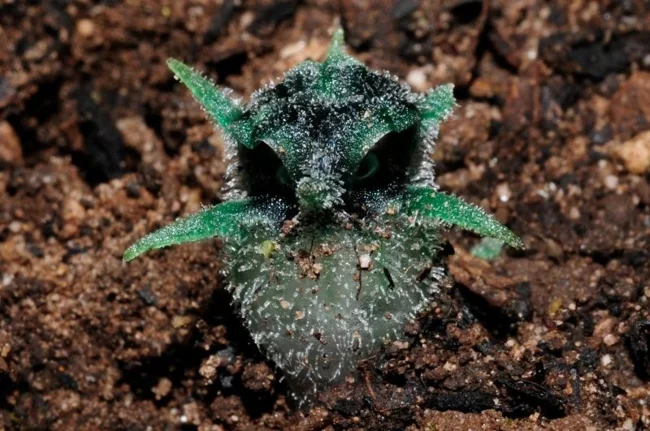
Napoleonaea angolensis 
This group is characterized by the formation of mycorrhiza - mutualistic (mutually beneficial) associations with fungi. At the same time, the fungus, integrating into the root system of the autotroph (host), receives carbohydrates from it, helping the plant extract phosphorus, nitrogen and other minerals from the substrate, reducing the content of heavy metals in the soil and providing other “services” that improve the adaptation of the plant. What benefits do fungi receive from symbiosis with mycoheterotrophs, and whether there is such a benefit, is not yet clear.
Thismia Rodwayi 
Harveya squamata 